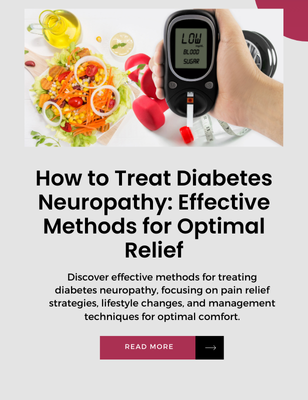Type 2 diabetes affects millions of people worldwide, changing how their bodies process sugar and use insulin. Many people wonder if insulin shots are always needed to manage this condition.

While not everyone with Type 2 diabetes needs insulin therapy right away, about half of all patients will eventually require insulin to maintain healthy blood sugar levels. The need for insulin often depends on factors like how long someone has had diabetes, their lifestyle habits, and how well other treatments work.
Treatment options for Type 2 diabetes have expanded beyond just insulin. Many people start with oral medications, diet changes, and exercise before moving to insulin therapy. These choices help doctors create personalized treatment plans for each patient.
Key Takeaways
- Type 2 diabetes treatment starts with lifestyle changes and oral medications before insulin becomes necessary
- Most patients will need insulin therapy as their condition progresses over time
- Modern insulin delivery methods and treatment options make diabetes management more flexible and convenient
What Is Type 2 Diabetes?

Type 2 diabetes is a serious metabolic condition where the body does not use insulin correctly. Insulin is a hormone that helps move sugar from blood into cells for energy.
In people with type 2 diabetes, the body either doesn’t make enough insulin or has become resistant to insulin’s effects. This causes sugar to build up in the bloodstream instead of moving into cells.
Progressive deterioration of beta cells in the pancreas leads to reduced insulin production over time. Beta cells are special cells that make and release insulin.
Key characteristics of type 2 diabetes:
- High blood sugar levels
- Insulin resistance
- Reduced insulin production
- Problems processing glucose
Many people develop type 2 diabetes due to lifestyle factors and genetics. Common risk factors include:
- Being overweight or obese
- Physical inactivity
- Family history of diabetes
- Age over 45
- High blood pressure
Early symptoms can be mild and develop slowly. Some people may not notice any symptoms at first. Common signs include:
- Increased thirst and urination
- Feeling tired often
- Blurry vision
- Slow-healing wounds
- Frequent infections
Insulin’s Role in Diabetes Management
Many people with Type 2 diabetes need insulin therapy to control their blood sugar. Research shows that most patients with Type 2 diabetes will eventually require insulin to reach their treatment goals.
Insulin helps cells absorb glucose from the blood. When the body doesn’t make enough insulin or can’t use it properly, blood sugar levels rise. This is what happens in Type 2 diabetes.
Early insulin treatment can help preserve beta cell function in the pancreas. Beta cells are responsible for producing natural insulin. Starting insulin at the right time may help maintain the body’s ability to produce some of its insulin.
Some patients start with oral medications first. As the disease progresses, they may need to add insulin. Others might need insulin right from diagnosis.
Common Types of Insulin:
- Long-acting insulin
- Rapid-acting insulin
- Mixed insulin
- Intermediate-acting insulin
The amount and type of insulin needed varies for each person. Doctors consider factors like:
- Blood sugar levels
- Body weight
- Diet and exercise habits
- Other health conditions
- Response to other diabetes medications
Understanding Type 2 Diabetes Treatment Options
Treatment options for Type 2 diabetes have grown more advanced over time. Many patients can manage their blood sugar through diet, exercise, and oral medications in the early stages.
As Type 2 diabetes progresses, many patients will need insulin therapy to control their blood glucose levels. This happens when the body’s insulin production decreases over time.
Common Treatment Approaches:
- Diet and exercise changes
- Oral diabetes medications
- Injectable non-insulin medications
- Insulin therapy
- Combination treatments
Modern insulin delivery methods like insulin pens make treatment easier for patients compared to traditional syringes. Healthcare providers work with each patient to find the right combination of treatments.
Blood sugar monitoring plays a key role in treatment success. Patients need to check their levels regularly and adjust their medication as directed by their doctor.
New therapeutic options continue to emerge for Type 2 diabetes. These give doctors and patients more choices to create effective treatment plans that fit individual needs.
The need for insulin varies among patients. Some people with Type 2 diabetes never need insulin, while others require it within a few years of diagnosis.
Factors Influencing Insulin Use in Type 2 Diabetes
Several key factors affect whether someone with Type 2 diabetes needs insulin therapy. These factors include blood sugar levels, how well other medications work, and the body’s response to treatment.
Patient education and communication between doctors and patients play a vital role in insulin treatment success. When patients understand their treatment goals, they are more likely to accept and stick with insulin therapy.
Physical factors that influence insulin use include:
- Body weight
- Exercise levels
- Diet choices
- Other health conditions
- Age
- Duration of diabetes
Treatment barriers can make it harder for some people to use insulin. Common barriers include fear of needles, concerns about side effects, and worries about cost.
Some people may need to start insulin therapy sooner if their blood sugar remains high despite taking other diabetes medications. Type 2 diabetes is a progressive illness, which means treatment needs often change over time.
Lifestyle changes can affect how well insulin works. Regular exercise and healthy eating habits may help reduce the amount of insulin needed to control blood sugar levels.
Cost and insurance coverage also impact insulin use decisions. These practical factors can determine which insulin types are available to patients.
Comparing Insulin with Other Medications

Many people with type 2 diabetes start treatment with oral medications like metformin. These medications help control blood sugar in different ways, such as improving insulin sensitivity or reducing glucose production.
Newer insulin preparations cause less hypoglycemia compared to older versions. This makes insulin a safer option than it was in the past.
When oral medications alone don’t work well enough, doctors may add insulin to the treatment plan. Combining insulin with other diabetes drugs can provide better blood sugar control.
Modern insulin analogs offer more flexibility than regular insulin. They come in rapid-acting forms for meals and long-acting versions for background control.
Key Benefits of Insulin:
- Works quickly to lower blood sugar
- Can be adjusted based on needs
- Effective when other medications fail
- Available in different forms for various situations
Common Oral Medications:
- Metformin
- Sulfonylureas
- DPP-4 inhibitors
- GLP-1 receptor agonists
The choice between insulin and other medications depends on several factors:
- Blood sugar levels
- Other health conditions
- Patient preferences
- Cost and insurance coverage
Lifestyle Modifications in Type 2 Diabetes Care

Making lifestyle changes plays a vital role in managing type 2 diabetes and can reduce the need for insulin therapy. Regular physical activity and healthy eating habits form the foundation of effective diabetes management.
Diet modifications include:
- Controlling portion sizes
- Limiting refined carbohydrates
- Choosing high-fiber foods
- Eating plenty of vegetables
- Reducing saturated fats
Exercise recommendations focus on consistent activity. People with type 2 diabetes should aim for 150 minutes of moderate exercise per week, spread across multiple sessions.
Research shows that lifestyle changes combined with regular blood sugar monitoring help patients maintain better control of their diabetes. These changes can delay or reduce the need for insulin therapy.
Weight management remains a key factor. Even a modest 5-10% reduction in body weight can improve insulin sensitivity and blood sugar control.
Sleep and stress management also affect blood sugar levels. Adults with diabetes should aim for 7-9 hours of quality sleep each night and practice stress-reduction techniques like meditation or deep breathing.
Regular medical check-ups help track progress and adjust treatment plans. Healthcare providers can guide patients in setting realistic goals and maintaining sustainable lifestyle changes.
Monitoring and Adjusting Diabetes Treatment
Regular blood sugar monitoring is essential for people with type 2 diabetes. This helps track how well current treatments are working and guides any needed changes.
Insulin therapy requires frequent monitoring throughout the day. Most patients need to check their blood sugar at least 2-3 times daily.
Blood sugar goals typically include:
- Before meals: 80-130 mg/dL
- 2 hours after meals: Less than 180 mg/dL
- A1C levels: Below 7%
Patients may need treatment adjustments if blood sugar levels stay outside these ranges. Changes in medication dosage often happen gradually to find the right balance.
Exercise and physical activity can affect blood sugar levels. Extended periods of exercise may require extra monitoring to prevent low blood sugar.
Doctors will usually review treatment plans every 3-6 months. They look at blood sugar records, A1C results, and any problems the patient has experienced.
Some patients benefit from using continuous glucose monitoring devices. These tools provide real-time data about blood sugar patterns and trends.
When Insulin Therapy Becomes Necessary
Many patients with type 2 diabetes will need insulin as their condition progresses. The need for insulin often happens when other diabetes medications stop working well enough to control blood sugar levels.
High blood sugar levels that stay above target ranges, even with oral medications and lifestyle changes, signal the need for insulin therapy. A doctor may recommend starting insulin if A1C levels remain above 7% despite trying other treatments.
Starting with a once-daily long-acting insulin is common. Some people may later need to add mealtime insulin or switch to pre-mixed insulin taken twice daily.
Key signs that insulin may be needed:
- Blood sugar levels consistently above target
- A1C above 7% despite other treatments
- Significant weight loss
- Ongoing thirst and frequent urination
- Other diabetes medications becoming less effective
Modern insulin delivery methods make treatment easier to manage. Insulin pens and long-acting formulas help simplify daily diabetes care.
Starting insulin does not mean a person has failed at managing their diabetes. It is a normal part of type 2 diabetes progression for many people.
Different Types of Insulin and Administration Methods
Type 2 diabetes patients have several insulin options. These include rapid-acting, short-acting, intermediate-acting, and long-acting insulin types.
Insulin administration methods continue to evolve. The most common method is injection using insulin pens or syringes.
Some patients use insulin pumps that deliver constant doses throughout the day. These small devices attach to the body and can be programmed for individual needs.
Inhaled insulin offers another option for some patients. This method delivers insulin through the lungs and may cause less weight gain than injectable forms.
Most patients start with a basic insulin regimen of one or two daily doses. The schedule depends on their blood sugar patterns and lifestyle needs.
Common Insulin Types:
- Rapid-acting (starts working in 15 minutes)
- Short-acting (starts working in 30 minutes)
- Intermediate-acting (starts working in 2-4 hours)
- Long-acting (works for 24+ hours)
Doctors choose insulin types based on each patient’s needs. They consider factors like daily schedules, blood sugar patterns, and other medications.
Potential Risks and Side Effects of Insulin Use
Intensive insulin therapy can cause several side effects that patients need to be aware of. The most common concern is hypoglycemia, which occurs when blood sugar drops too low.
Weight gain is another frequent side effect of insulin treatment. Many patients gain between 4-7 pounds after starting insulin therapy.
Injection site reactions can develop, including redness, swelling, or irritation at the spot where insulin is administered. Rotating injection sites helps reduce this risk.
Common Side Effects:
- Low blood sugar (hypoglycemia)
- Weight gain
- Injection site reactions
- Skin changes at injection sites
- Insulin resistance
Poor communication between doctors and patients about these risks can lead to treatment non-compliance. Patients who don’t understand proper insulin management face higher risks of complications.
Some patients experience anxiety about starting insulin therapy. This fear can cause them to delay or avoid necessary treatment.
Proper education and monitoring help minimize these risks. Regular blood sugar testing and working closely with healthcare providers ensure safer insulin use.
Ongoing Research and Future Treatments for Type 2 Diabetes
Scientists keep making progress in new and exciting treatments for type 2 diabetes. Research teams are testing medications that work in different ways from current options.
Many studies focus on better ways to help the body make and use insulin. These include stem cell research and new types of injectable medications that work longer than current options.
Advanced technology and emerging tools are changing how people manage diabetes. Smart insulin pens and continuous glucose monitors give patients more control over their treatment.
Scientists are studying genetic factors in diabetes to create more personalized treatments. This could help doctors choose the most effective medications for each patient based on their DNA.
Promising areas of research include:
- Artificial pancreas technology
- Once-weekly insulin injections
- New types of pills that improve insulin sensitivity
- Smart insulin that activates only when needed
Studies of combination therapies show promise in helping patients manage blood sugar with fewer medications. These treatments might make it easier for people to stick to their treatment plans.
Frequently Asked Questions
Many patients have practical questions about starting insulin therapy for Type 2 diabetes. Common concerns include timing, necessity, and finding the right treatment approach.
At what point do you need insulin for type 2 diabetes?
Doctors typically recommend insulin therapy when blood sugar remains high despite using oral medications and lifestyle changes.
Starting insulin becomes necessary if A1C levels stay above 7% after trying other treatments.
What percentage of type 2 diabetics take insulin?
About 30-40% of people with Type 2 diabetes use insulin as part of their treatment plan.
This number increases with the duration of diabetes, as the body’s ability to produce insulin naturally decreases over time.
When is the best time to take insulin for type 2 diabetes?
The timing depends on the type of insulin prescribed. Long-acting insulin works best when taken at the same time each day, often before bedtime.
Rapid-acting insulin should be taken 15-20 minutes before meals.
Can type 2 diabetes be treated without insulin?
Many people manage Type 2 diabetes through diet, exercise, and oral medications.
Lifestyle changes and other diabetes medications can effectively control blood sugar levels in the early stages of the disease.
What are the benefits of insulin for type 2 diabetes?
Insulin helps lower blood sugar quickly and effectively when other treatments aren’t working well enough.
Proper insulin therapy can reduce the risk of diabetes complications and improve overall quality of life.
How does one determine the best insulin regimen for type 2 diabetes?
Doctors consider several factors including blood sugar patterns, lifestyle, and individual health needs.
Regular blood sugar monitoring and ongoing communication with healthcare providers help fine-tune the insulin dose and schedule.
The best regimen often requires adjustments over time based on how well blood sugar levels are controlled.
Conclusion
Many people with Type 2 diabetes can manage their blood sugar through diet, exercise, and oral medications. As the disease progresses, insulin therapy becomes necessary for some patients to maintain good control.
Modern insulin delivery methods like insulin pens make treatment easier and more convenient than traditional syringes. This helps patients stick to their treatment plan.
The goal is to find the right combination of treatments for each person. What works for one patient may not work for another. Regular check-ups with healthcare providers help determine if and when insulin is needed.
Patients should not view insulin as a treatment failure. It’s simply another tool to help manage diabetes effectively. Early discussion about insulin options helps reduce anxiety when treatment changes are needed.
With proper education and support, patients can successfully manage Type 2 diabetes using insulin when needed. The key is working closely with healthcare providers to find the most effective treatment















